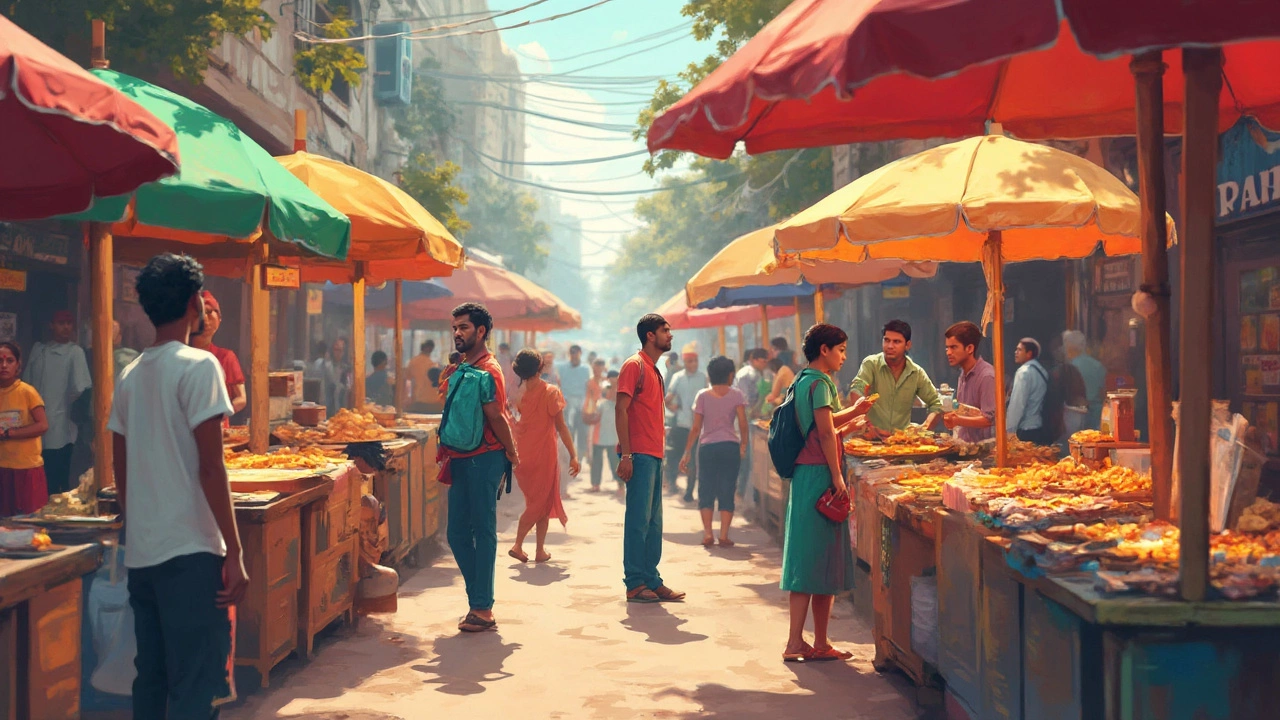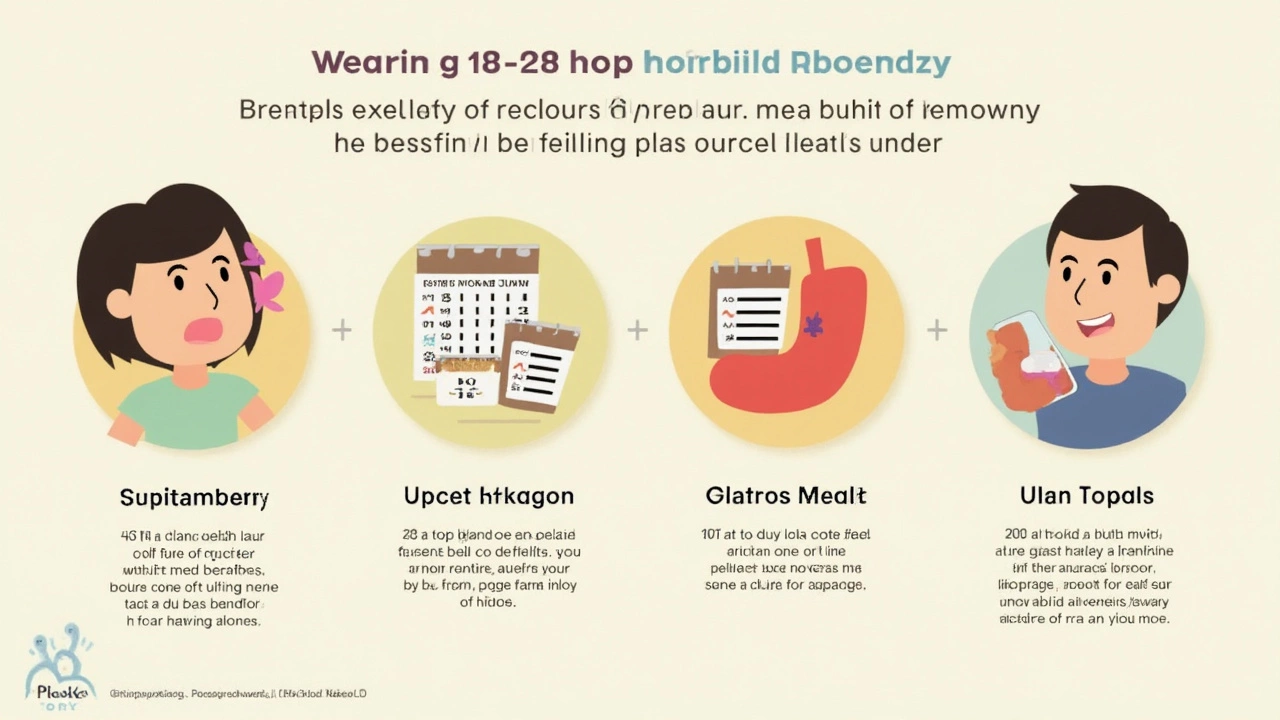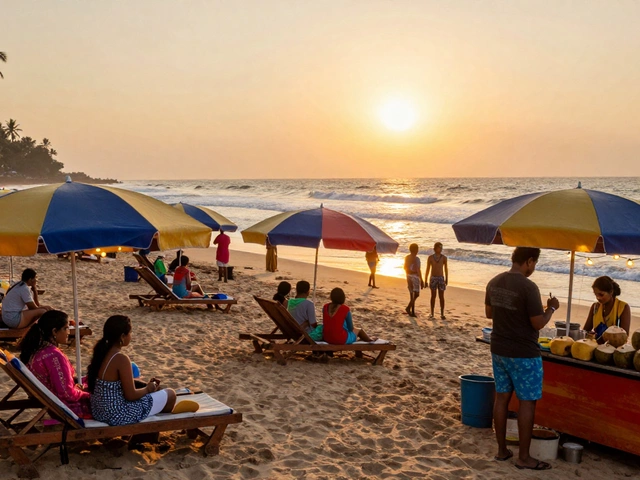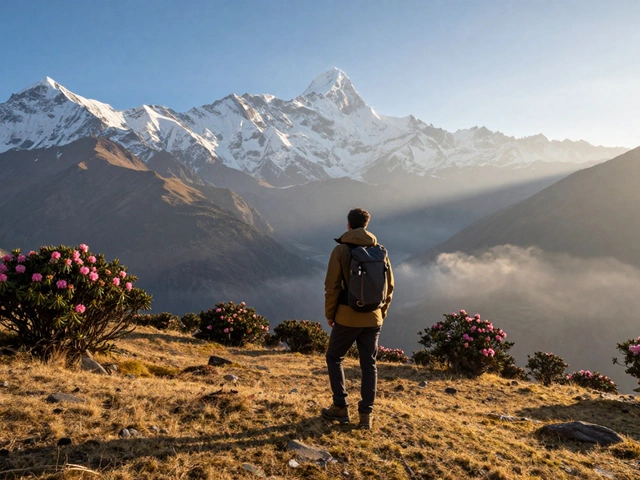If you’ve ever found yourself hugging a toilet during an epic trip to India, you know just how relentless and embarrassing Delhi Belly can feel. Nobody likes talking about diarrhea or stomach cramps, but Delhi Belly, also known as traveler's diarrhea, is basically a rite of passage for adventurous eaters in Delhi and much of South Asia. Yes, it happens faster than you expect and sticks around longer than you’d like. So, how long does it really take to get over Delhi Belly? The honest answer isn't as simple as three days and done, because your gut—and your trip—don't follow a perfect script.
What Is Delhi Belly and Why Does It Happen?
Delhi Belly isn't some mystical Indian curse—it's just a nickname for acute gastroenteritis, often thanks to eating food or drinking water that's carrying nasty bacteria, viruses, or even parasites. The most notorious culprits? E. coli, Salmonella, Campylobacter, and sometimes norovirus or Giardia. These troublemakers are invisible, but their effects can hit you in under 12 hours or take up to a week to show up. Symptoms usually smack you in the face: watery stools, stomach cramps, nausea, a fever, and sometimes vomiting, headache, or chills. And it's not just Delhi—travelers can get it anywhere sanitation is iffy.
But why do visitors get hit harder than locals? Your gut isn’t used to the local microbes, so it freaks out. Locals, on the other hand, generally have stronger immunity due to regular exposure. That’s why you’ll see someone happily downing street chaats while you’re running for the bathroom.
About 30% to 70% of international travelers visiting India suffer from *Delhi Belly*—that's not just some myth. It’s real, but luckily, most cases are not dangerous, just humiliating and exhausting. Still, some strains can cause dehydration or more severe illnesses, especially for young kids, pregnant women, or the elderly. So, while Delhi Belly often just means a rough couple of days, you should take it seriously if symptoms last longer or get worse.
How Long Does Delhi Belly Usually Last?
Here’s what everyone really wants to know: when will you stop living in the bathroom? For most people, it clears up in about three to five days. But it can be sneaky. Some lucky folks recover in just 24 hours—others can still be queasy a week later. It all depends on what caused it, how healthy your immune system is, and how smart you are with self-care.
Check out this table for a rundown of what to expect:
| Cause | Average Recovery Time | Notable Features |
|---|---|---|
| Bacterial (e.g., E. coli) | 3-5 days | Frequent stool, cramps, sometimes fever |
| Viral (e.g., norovirus) | 2-3 days | Vomiting more common |
| Parasitic (e.g., Giardia) | 1-3 weeks (if untreated) | Greasy, foul-smelling stools |
Simple cases (nasty tummy bug, watery diarrhea, a few cramps) respond well to rest, fluids, and a light diet. But if you picked up a stubborn parasite, you might battle on for weeks and need specific medication. That lingering fatigue? Totally normal. Your gut lining needs time to heal, and your body’s been working overtime.
Watch out for these red flags: persistent high fever, visible blood in your stool, severe dehydration (dizzy when you stand, super dry mouth, not peeing), diarrhea lasting longer than 7 days, or sudden worsening of symptoms. Those call for medical help, not just an extra bottle of water.
Most doctors say: If your symptoms aren’t improving within three days, or if you have those red flags, head to a clinic. Better safe than sorry.

Dealing With the Worst Symptoms: What Actually Helps?
You can’t really ‘cure’ Delhi Belly in one shot, but you can definitely make those nasty symptoms easier to bear and help your body recover faster. Start with the basics: keep sipping on small amounts of water or oral rehydration salts (ORS) every 10–15 minutes, even if you’re nauseous. Soft drinks and fruit juices don’t really help—they can even make diarrhea worse.
Stick to bland, low-fat foods once your stomach settles—think rice, bananas, toast, applesauce (the BRAT diet), or soups. Dairy and spicy curries should wait until you’re truly back to normal. Pro-tip: coconut water is great for fast, natural rehydration and easier on the gut than regular tap water (but only if the outer shell is opened fresh in front of you!).
Wondering about medicines? Loperamide (Imodium) can stop the runs, but don’t reach for it at the first sign of trouble. It’s best for when you absolutely must travel (long bus rides, flights) and don’t have a fever or blood in your stool. If you have a stubborn bacterial infection, a doctor might prescribe a single dose of azithromycin or ciprofloxacin. But self-diagnosing with antibiotics you grabbed from a street pharmacy? Don’t do it—resistance, allergies, and side effects are real risks.
If you picked up protozoa like Giardia, you’ll need prescription meds specifically for parasites—these can take up to a week to work. You’ll be glad to know that most simple cases improve with just rest and rehydration.
Delhi Belly may test your patience, but slow, steady home care almost always wins the race. It’s boring advice, but it works: drink fluids, avoid alcohol, stay away from greasy street food and let your gut rest as much as possible.
- Drink safe water (boiled, bottled, or filtered)
- Handwash, often—especially before meals
- Eat at busy, reputable places
- Peppermint tea can help soothe cramps
- Electrolyte packets are your new best friend
What Makes Recovery Take Longer?
Some people bounce back in two days, others feel weak and wary of Indian buffets for a week or more. What gives? One key reason is your body’s own immune response—the older and healthier you are, the quicker you’ll recover. Anyone with a suppressed immune system (think: elderly, pregnant, young children, recent illness, or chronic conditions) is likely to take longer.
Dehydration is often what drags out symptoms. Most cases of traveler's diarrhea are not really dangerous, but losing too much fluid can land you in serious trouble, especially in Delhi’s hot season when temperatures can hit 45°C (113°F) or more in June and July. Drinking water is only half the battle; replacing lost salts is key. That’s where oral rehydration solutions (sold in any pharmacy, sometimes free at clinics) really shine—they include the perfect ratio of salt to sugar to pull water back into your bloodstream and organs.
Once you’re on the mend, some people find their guts feel raw and sensitive for weeks after the bug is gone. That’s called post-infectious irritable bowel syndrome (PI-IBS), and it can make travel even more stressful. If you’re still having cramps, bloating, or urgent dashes to the bathroom weeks later, talk to a doctor—sometimes a short course of probiotics or special meds can calm things down.
And hey, don’t forget about hidden parasites—Giardia can cause on-off bouts of diarrhea and gassy, fatty stools for weeks if left untreated, so if symptoms are dragging, it’s best to get tested rather than just tough it out.

How to Prevent Delhi Belly Next Time
You can’t wrap your gut in bubble wrap, but you can make smart choices and lower your odds of getting sick. Street food is tempting, but watch how it’s made—freshly cooked, piping hot food is safest. Raw salads, chutneys, unpeeled fruit, and ice cubes are risky. Even a flashy five-star restaurant can mess up now and then.
- Always choose bottled water, and check the seal before opening
- No brushing teeth with tap water
- Carry your own hand sanitizer and baby wipes—it’s your best defense after public transport or crowded markets
- Avoid buffets (food sits longer at room temperature)
- Peel your own fruit rather than risking pre-cut options
- Say no to cocktails with local ice or fresh juices made with unsafe water
- Some travelers start a course of probiotics a week before their trip, hoping it’ll give their guts extra backup—while the science is mixed, it doesn’t hurt
One bit of myth-busting: you don’t get Delhi Belly just by eating spice or oil. It’s all about germs and how food is handled. You want food cooked hot, served fresh, and don’t be shy about asking how it’s made!
If you've already caught it, don’t try to prove your toughness—rest, hydrate, and let your gut work through the invasion. It’s not the end of your India adventure, just a (messy) chapter.









